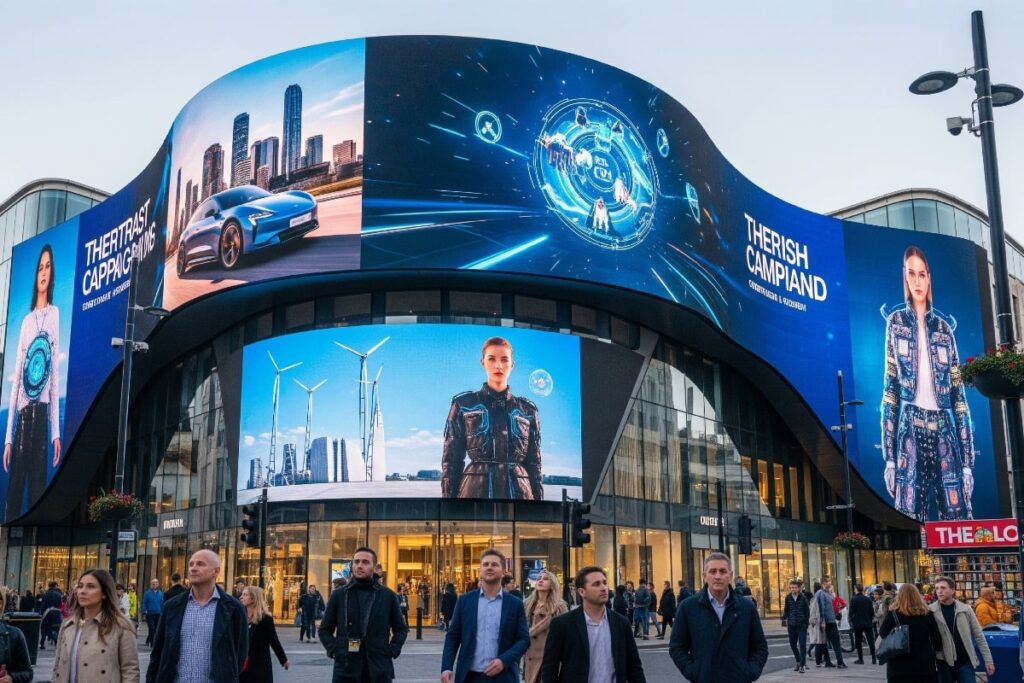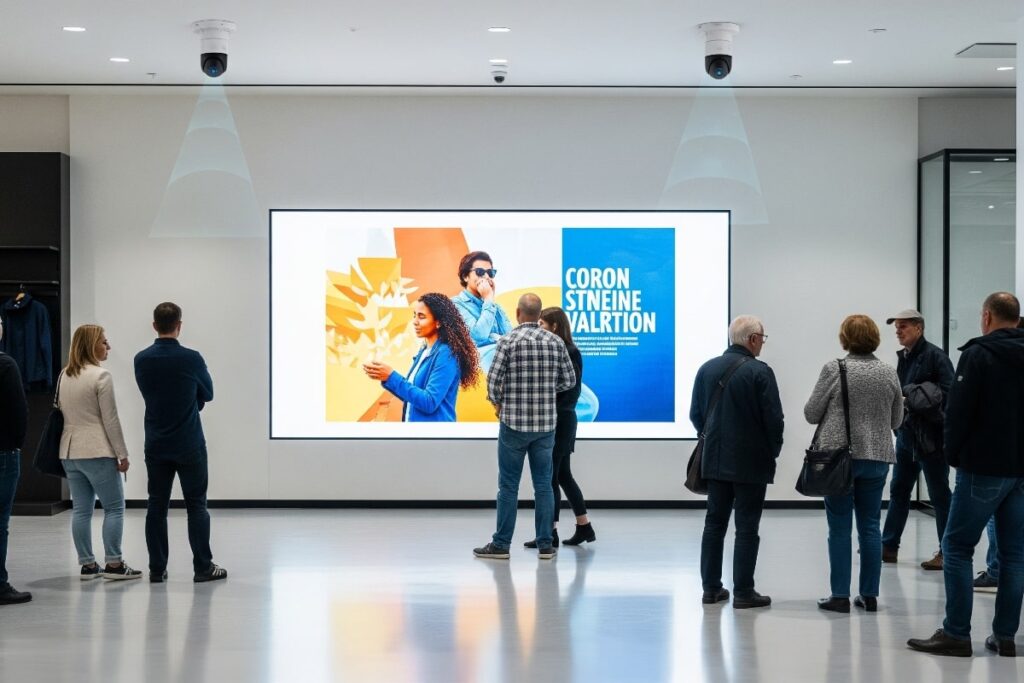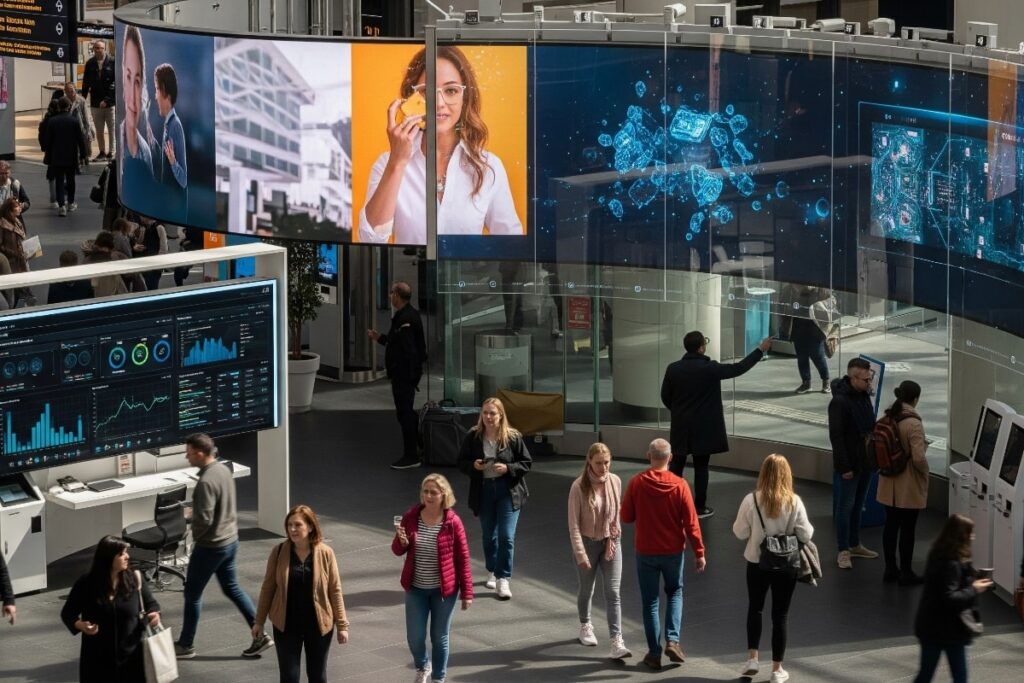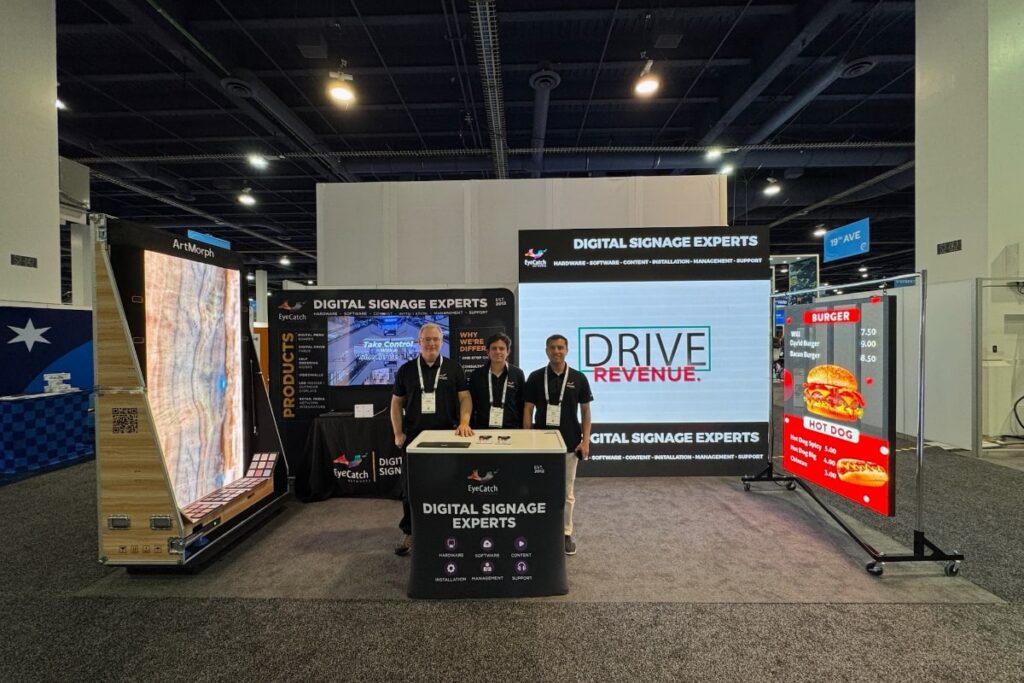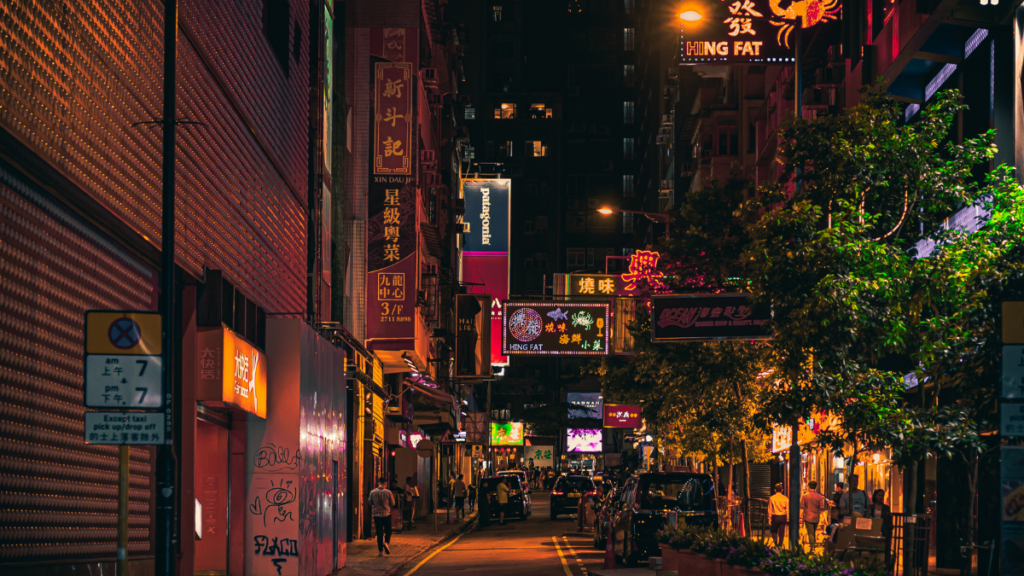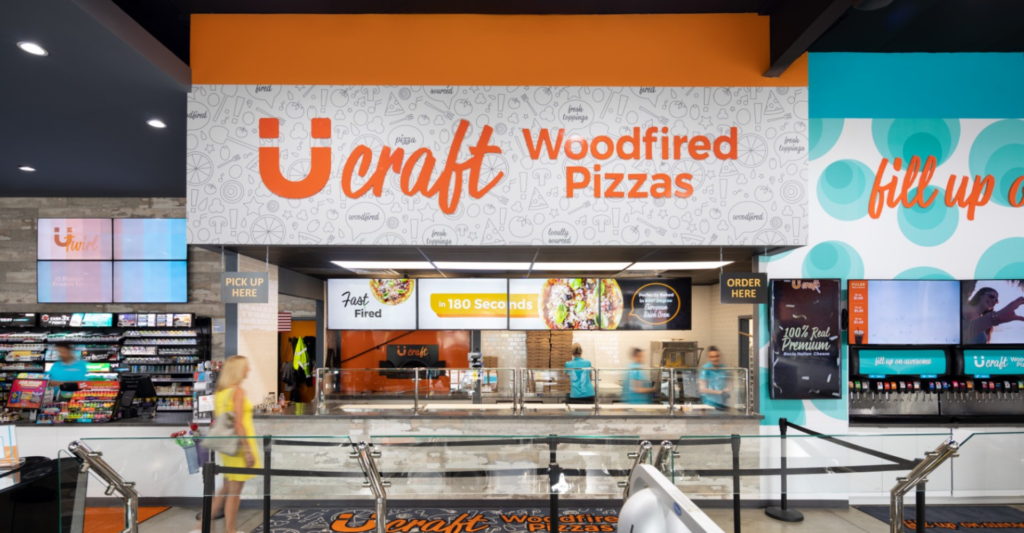Shaping the Future Shopping Experience with Dynamic LED Displays
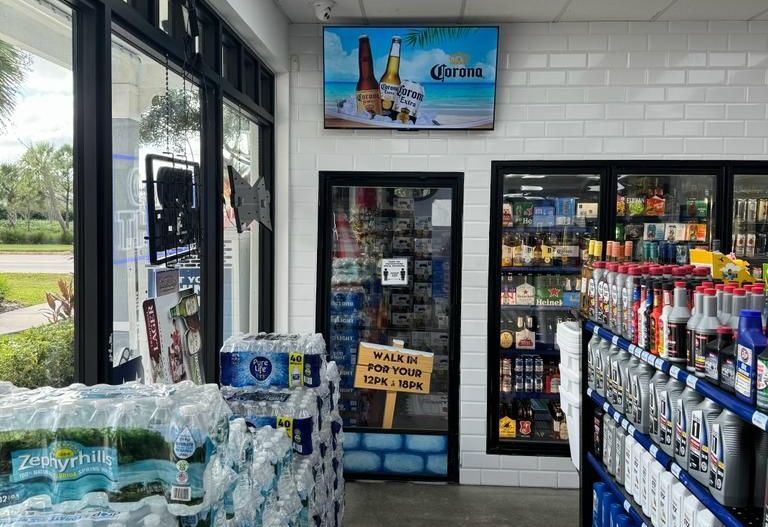
In the fast-paced world of retail, where brick-and-mortar stores compete with e-commerce giants, creating a memorable and engaging shopping experience is paramount. LED displays have emerged as a powerful tool to transform traditional signage into dynamic, eye-catching communication channels. In this blog, we’ll explore how LED displays are revolutionizing the retail industry and discuss key strategies for maximizing their impact.
Importance of LED Displays in Retail
LED displays are no longer mere accessories; they are strategic investments that can significantly impact a retailer’s success. Here’s why they matter:
- Visual Impact: LED displays offer exceptional image quality, with vibrant colors and high contrast. Whether showcasing products, promotions, or brand messaging, LED screens capture attention and invite exploration.
- Creative Flexibility: From storefront displays to in-store videowalls, LED technology allows for a wide range of formats. Retailers can adapt their content based on time of day, season, or specific campaigns.
- Personalization: LED displays can deliver personalized content. Imagine a display recognizing a loyal customer and offering tailored recommendations. Personalization enhances engagement and drives sales.
- Brand Differentiation: Retailers embracing LED displays demonstrate innovation and commitment to customer experience. This differentiation fosters brand loyalty and sets them apart from competitors.
In summary, LED displays are not just about conveying information; they are a versatile storytelling platform that engages customers and leaves a lasting impression.
Types of LED Displays for Retail
Not all LED displays are created equal. Retailers must choose the right type of display based on their goals and context. Here are some common options:
In the fast-paced world of retail, where brick-and-mortar stores compete with e-commerce giants, creating a memorable and engaging shopping experience is paramount. LED displays have emerged as a powerful tool to transform traditional signage into dynamic, eye-catching communication channels. In this blog, we’ll explore how LED displays are revolutionizing the retail industry and discuss key strategies for maximizing their impact.
Importance of LED Displays in Retail
LED displays are no longer mere accessories; they are strategic investments that can significantly impact a retailer’s success. Here’s why they matter:
- Visual Impact: LED displays offer exceptional image quality, with vibrant colors and high contrast. Whether showcasing products, promotions, or brand messaging, LED screens capture attention and invite exploration.
- Creative Flexibility: From storefront displays to in-store videowalls, LED technology allows for a wide range of formats. Retailers can adapt their content based on time of day, season, or specific campaigns.
- Personalization: LED displays can deliver personalized content. Imagine a display recognizing a loyal customer and offering tailored recommendations. Personalization enhances engagement and drives sales.
- Brand Differentiation: Retailers embracing LED displays demonstrate innovation and commitment to customer experience. This differentiation fosters brand loyalty and sets them apart from competitors.
In summary, LED displays are not just about conveying information; they are a versatile storytelling platform that engages customers and leaves a lasting impression.
Types of LED Displays for Retail
Not all LED displays are created equal. Retailers must choose the right type of display based on their goals and context. Here are some common options:
- Window Displays: These LED screens adorn storefront windows, enticing passersby. They can showcase product images, videos, or interactive content.
- Videowalls: Configurations of multiple LED panels create immersive experiences. Videowalls are ideal for brand presentations, fashion shows, and special events.
- Digital Menus: Restaurants and cafes use LED displays to replace traditional printed menus. Dynamic content updates keep customers informed about specials and pricing.
- Stay tuned as we delve deeper into the intricacies of LED displays in retail, including content management, ROI measurement, and future trends. 🌟
Creative Content Design and Captivating Visuals
Creating compelling content for LED displays requires a blend of creativity and strategic thinking. Let’s explore how to make your LED content stand out:
- High-Resolution Imagery: Start with crisp, high-resolution images. Whether showcasing products or brand visuals, clarity matters. Invest in professional photography or use stock images wisely.
- Animations and Transitions: Static images are good, but animations add dynamism. Smooth transitions between content segments keep viewers engaged. Consider fade-ins, slide-ins, or subtle motion effects.
- Calls to Action (CTAs): Every LED display should have a purpose. Whether it’s promoting a sale, encouraging sign-ups, or highlighting a new collection, include clear CTAs. Use action verbs like “Shop Now” or “Discover.”
- Contextual Content: Tailor your LED messages to the context. For example:
- Morning: Breakfast specials at a café.
- Afternoon: Featured products.
- Evening: Event announcements or happy hour deals.
- Interactive Elements: If your LED display is touch-enabled, leverage interactivity. Create mini-games, quizzes, or product explorations. Engage customers beyond passive viewing.
- Remember, your LED content is an extension of your brand. It should align with your overall marketing strategy and resonate with your target audience.
Measuring ROI for LED Displays
Investing in LED displays is a strategic decision, but how do you measure its impact on your business? Here are some steps to evaluate the return on investment (ROI):
Sales Metrics: Track changes in sales after implementing LED displays. Compare revenue during LED display campaigns with periods without them. Did sales increase? Did specific products see a boost?- Dwell Time: Measure how long customers spend near LED displays. Longer dwell time often correlates with increased engagement and potential sales.
- Foot Traffic: Monitor foot traffic patterns around LED displays. Are they attracting more visitors to specific areas of your store?
- Brand Perception: Conduct surveys or analyze social media sentiment. Do customers perceive your brand as more innovative or customer-centric due to the LED displays?
Remember that ROI isn’t just about immediate sales; it’s also about enhancing the overall customer experience and building brand loyalty.
Content Management Systems (CMS) Integration
Efficiently managing content across multiple LED displays can be challenging. That’s where a robust CMS comes in:
Centralized Control: A CMS allows you to update content remotely across all displays. Whether you have one store or a global chain, consistency matters.- Scheduling: Set specific times for different content. Promotions in the morning, product highlights in the afternoon, and event announcements in the evening.
- Emergency Alerts: In case of emergencies or sudden changes, a CMS lets you push critical messages instantly.
- Analytics and Reporting: Monitor performance, track engagement, and identify trends. Adjust your content strategy based on data insights.
Future Trends in LED Displays for Retail
The world of LED displays continues to evolve. Here are some exciting trends to watch:
Flexible Displays: Imagine curved LED screens wrapping around store pillars or fitting into unconventional spaces.- Mobile Integration: Sync LED displays with mobile apps. Customers can scan QR codes for exclusive offers or personalized content.
- Eco-Friendly Solutions: Energy-efficient LED displays with recyclable materials are gaining popularity.
Stay ahead by embracing these trends and adapting your retail strategy to the dynamic world of LED displays.
Experiential Retail with LED Displays
The future of retail lies in creating memorable experiences for customers. LED displays play a pivotal role in achieving this:
Storytelling: LED displays allow you to tell your brand’s story visually. Share behind-the-scenes glimpses, highlight craftsmanship, or showcase sustainability efforts.- In-Store Events: Use LED displays for live events, product launches, or influencer collaborations. Stream fashion shows or host interactive workshops.
- Emotional Connection: Music, ambient lighting, and captivating visuals on LED displays evoke emotions. Create a cozy winter vibe or a vibrant summer atmosphere.
LED displays have revolutionized the retail sector, introducing a visual dynamism that captures attention and transforms the shopping experience. The high resolution and vibrant colors of these displays breathe life into products, enticing customers to explore and engage. Beyond their visual impact, LED displays empower brands to tell creative stories through promotional videos and interactive menus, adapting messages to suit different times, seasons, or specific promotions. The integration of a robust content management system ensures consistency in messaging across all displays, with a focus on metrics such as dwell time, foot traffic, and brand perception to measure return on investment comprehensively.
Looking forward, staying at the forefront of retail trends involves embracing flexibility with displays, incorporating augmented reality, integrating mobile solutions, and prioritizing eco-friendly practices. LED displays go beyond serving as mere screens; they become powerful storytellers that contribute to experiential retail. From interactive showcases and events to forging emotional connections, these displays enhance the overall customer journey. Sustainability remains a crucial consideration, encouraging the choice of energy-efficient displays, prioritizing recyclability, and prolonging the lifespan of LED technology. In essence, LED displays not only illuminate products but also pave the way for unforgettable and sustainable customer experiences in the ever-evolving retail landscape.




